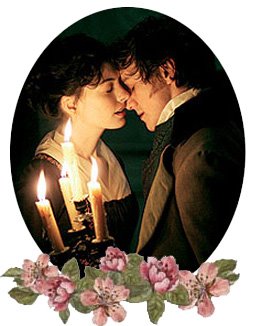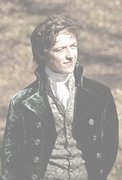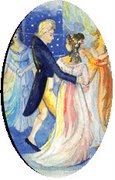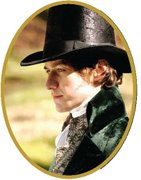Jane Austen the Unseen Portrait - an alternative theory ...
 We made a post a month ago (view here) which proposed that the new portrait found and owned by Dr Paula Bryne is actually Jane Austen.
We made a post a month ago (view here) which proposed that the new portrait found and owned by Dr Paula Bryne is actually Jane Austen.The 'unseen' portrait is thought to have been created from life in London around 1816 by an artist of moderate abilities. Although it is acknowledged that Paula may be correct in her assumptions, given that the work of art is this old, there must leave some room for conjecture, so Chris would like to offer another possibility. The documentary made the point that the picture fits Anna Lefroy’s description exactly, so he believes it could be exactly that, a picture produced to the recollection of Anna, most probably in 1833.
Chris has actually seen Anna Lefroy’s diary and this places Anna at a house in the grounds of Oakley Hall (see 1st picture above) for a period from 1831 until 1833 and again for a period between 1840 and 1849.
Anna’s house in the grounds of Oakley Hall was most probably the Garden Cottage of the present hotel, and it was here Chris believes that Anna finally plucked up the courage to become a writer like her Aunt Jane. Her short story 'Mary Hamilton' was published in the Literary Review of 1833, the same year Austen's novels came back into print in the Bentley Standard Editions. Anna had to vacate Oakley Hall on the death of its owner Wither Bramston in 1833, and Chris postulates that it had been Wither who had supported Anna in her writing to the displeasure of Wither’s wife Mary, sister of William Chute of the Vyne. William and his wife Eliza had strong connections with the Austens; James (Anna's husband) had hunted with the Vine Pack and Anna’s half brother James Edward Austen (Leigh) married Eliza’s niece.
Chris Brindle believes that it was Ubsdell who produced the 1833 picture because he knew of Anna’s struggle as a writer. Ubsdell was known to have sketched Anna back in 1833 because he included her in his picture, “Sermon at St Lawrence” (see 2nd picture below). In this allegorical work Ubsdell uses the images of the famous people he has painted, to create a scene of peopl
 e sitting round the smallest church in the country listening to a sermon by Samuel Wilberforce. Ubsdell portrays his patron Charles Richard Sumner Bishop of Winchester as a shepherd leaning on his shepherd’s crook, whilst Anna holds her hand on his as if seeking his guidance.
e sitting round the smallest church in the country listening to a sermon by Samuel Wilberforce. Ubsdell portrays his patron Charles Richard Sumner Bishop of Winchester as a shepherd leaning on his shepherd’s crook, whilst Anna holds her hand on his as if seeking his guidance.In his early years Ubsdell had an art gallery and studio at 135 High Street Portsmouth, England, opposite the theatre. He became very successful with the advent of photography and in 1859 moved to possibly the best house in Portsmouth, 1 Green Row. He became the local artist of choice for the rich and famous passing through Portsmouth. Portraits of Sir Francis Austen and Charles Austen are also probably by him. It is likely Ubsdell was selected for the retrospective Jane Austen picture in 1833 because in that year he had exhibited at the Royal Academy for the first time.
There could also be other Ubsdell pictures of the Austen family. The miniature painting of Sir Charles Austen (done surely in England in 1846 rather than Malta in 1850) at Chawton Cottage is remarkably similar in size, shape and style to the Anna Lefroy miniature, and the admiral in 'The Royal Navy No 2' aquatint in the National Maritime Museum based on an Ubsdell watercolour, bears a remarkable similarity to the Francis Austen portrait, plate 5 in Southam's 'Jane Austen & The Navy'.











































1 comment:
This is intriguing, indeed, but I would have liked to see that Ubsdell's tiny portrait of Anna Lefroy for comparison with the "unseen portrait", also getting a plausible explanation for the inclusion of Westminster - St Margaret (and a tiny part of Westminster Bridge – look closely ) in the portrait, if it was based on Anna's recollection of her aunt in 1833.
Many Thanks & Hugs
Post a Comment